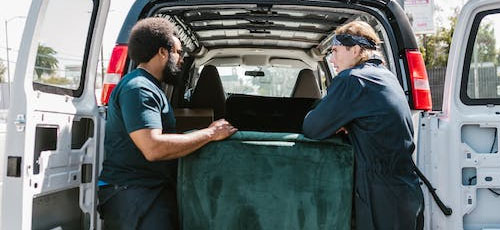The basic idea of a ‘’delivery service’’ started millennia ago, when messengers and barters were paid to deliver products and services. The early days of delivery services were unregulated and informal in most instances.
The first professional delivery services were only established around the mid-19th century in the USA. Courier companies promised to deliver parcels and items to a customer’s doorstep. Services developed efficient supply chains to accommodate an increase in customer demand over the years.
Courier services such as Pony Express developed delivery systems that people could rely on to get their parcels delivered safely and in a timely fashion. In the early days, packages were transported via horse-drawn carriages. When a parcel arrived at your doorstep within several weeks, it was fast and efficient.

However, modern delivery systems have slowly developed to be more efficient and much faster than ever before. Businesses have found new ways to overcome obstacles in the delivery process, and systems have become more refined to cater to more demanding customers.
When the groundwork for better infrastructure was laid, railways and roads could transport parcels in a much quicker and more timely manner. Big retail companies such as Sears and Montgomery Ward used delivery services extensively to grow their vast enterprise.
Delivery times were soon shortened from weeks to customers receiving their parcels within a matter of days. Popular products that were being delivered at the start of the industrial revolution included home appliances, clothing, work instruments, and medical supplies.

The quick and efficient delivery of medical supplies also meant that patients could find treatments quickly. Towards the end of the 20th century, delivery systems were advanced enough to deliver packages and parcels on a global scale.
The advent of computers meant that people could place more orders online than ever before. This led to the rise of multi-billion-dollar courier companies such as DHL and FedEx. Competitors such as Amazon started releasing ‘’prime’’ delivery services that could send a parcel to a customer within a matter of a day or two.
Same-day delivery options meant that consumers had the option to pay more to receive the goods they buy online. Businesses could charge more by offering services that are more efficient and timelier.
Software algorithms slowly made their way into the processes of delivery systems, helping to optimise productivity and service delivery. Analytics software can be used to monitor an online user’s behaviour, allowing delivery services to provide tailor-made services to customers.
Delivery services are still becoming more advanced. Autonomous vehicles, delivery drones, and mobile robots are only some innovations that are striving to make delivery even more efficient. Today, machines can deliver everything, including vehicles, furniture, parcels, food, laundry, and medical supplies.
Delivery services are designed to make our lives easier and more convenient. It will be interesting to see where delivery services are headed in the next few decades.

